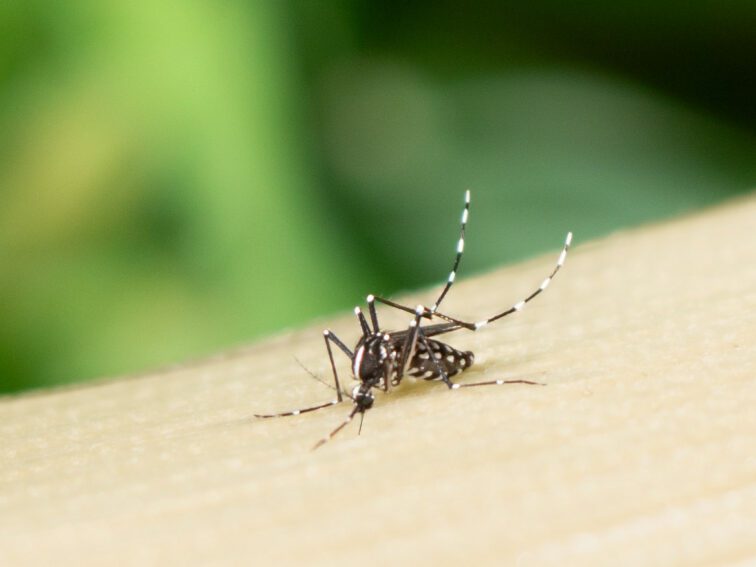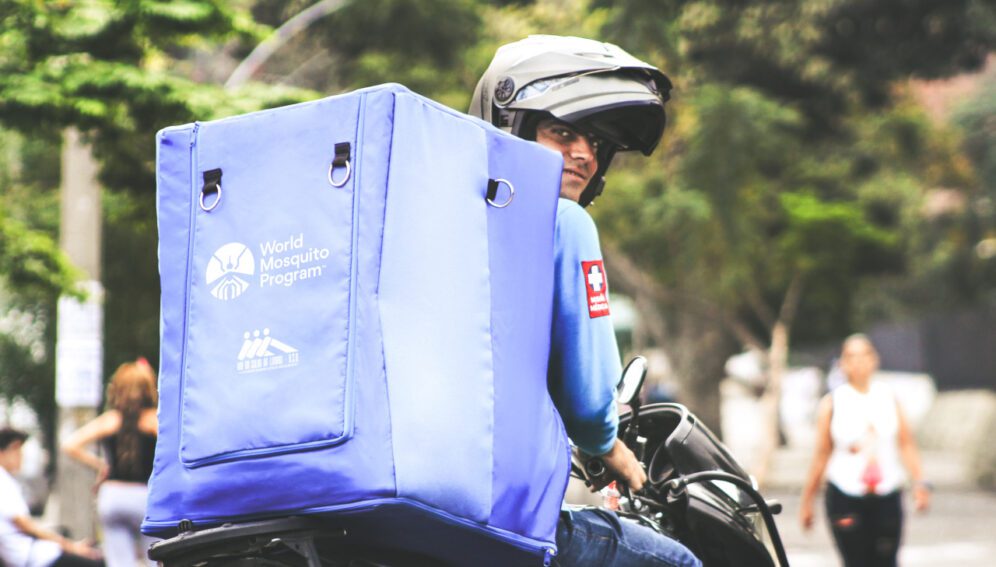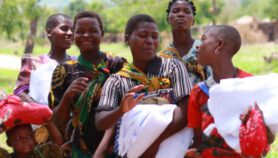By: Roberto González
Send to a friend
The details you provide on this page will not be used to send unsolicited email, and will not be sold to a 3rd party. See privacy policy.
[MEXICO CITY] When Waldeir Barbosa da Silva explained to his family that he was going to release hundreds of thousands of mosquitoes into the open, infected with a bacterium, they were surprised.
In Niterói, southeast Brazil, where da Silva lives, diseases spread by mosquitoes, such as dengue, chikungunya, and Zika, pose a serious public health problem.
However, when mosquitoes carry the bacteria Wolbachia, naturally present in many insects, their ability to transmit these viruses decreases.
“Community involvement is the most important thing we do. Many interventions don’t succeed because people don’t understand or trust.”
Peter Ryan, entomologist, Colombia.
“I leave home at 4.30am,” says da Silva, a technician for Brazil’s Oswaldo Cruz Foundation (Fiocruz).
“At Fiocruz I go straight to where the mosquito tubes are – about 150,000 or 200,000 of them – and withdraw the amount that I have to release. Every day in a different area.”
In 2023, global dengue cases hit a historic high of more than five million, with 5,000 deaths reported worldwide. Eighty per cent of the cases were in the Americas, according to the latest analysis from the World Health Organization (WHO).
The finding about Wolbachia was made by Scott O’Neill, founder of the World Mosquito Program (WMP), and his colleagues in 2009.
In 2011, Wolbachia-carrying mosquitoes were released for the first time into a community in the Cairns region of Australia. Five weeks later, 100 per cent of mosquitoes at Yorkeys Knob and 90 per cent at Gordonvale were found to carry Wolbachia.
Since then, WMP has devised a strategy to breed large numbers of infected mosquitoes and release them into places with high rates of mosquito-borne diseases.
The first achievement using this technique was the transferral of the wMel Wolbachia strain to the Aedes aegypti mosquito, which does not carry it naturally.
“The bacterium was injected into the eggs of mosquitoes,” says Sandra Zapata, an environmental technologist who worked with WMP in Barrio Paris, a district of Bogotá, Colombia, during the initiative’s most recent intervention.
In that instance, according to a study published in PLOS Neglected Tropical Diseases, the release of mosquitoes in the cities of Bello, Medellín and Itagüí reduced the incidence of dengue by more than 94 per cent compared to previous outbreaks.
In another study, published by the same journal in 2021, the incidence of dengue fever decreased by 69 per cent, chikungunya by 59 per cent and Zika by 37 per cent after Wolbachia-infected mosquitoes were released in Niterói.

Aedes aegypti mosquitoes are responsible for transmitting diseases such as dengue, Zika and chikungunya. Image credit: NIAID/Flickr, (CC BY 2.0 DEED.)
Introducing the bacteria into mosquito eggs is called embryonic microinjection, a complex technique for mass production.
“Luckily, Wolbachia is transmitted vertically from mother to offspring,” says Gabriela de Azambuja García, a veterinarian at a Fiocruz laboratory who was not involved in the research.
After the first group of mosquitoes with Wolbachia is established in the laboratory, all that’s needed is to mate females with males collected using traps from the area where they will be released.
Change of strategy
As well as its projects in Colombia and Brazil, the WMP works in Mexico, Honduras and El Salvador and in affected communities in Asia, such as Indonesia, Laos, Sri Lanka and Vietnam.
Before undertaking such an intervention, WMP recognises the need to explain to people how releasing mosquitoes can help reduce dengue fever, when previously the strategy to lower transmission was to prevent them from reproducing.
To that end, its interventions begin with community work.
“Community involvement is the most important thing we do,” explains Peter Ryan, an entomologist who leads the research in Colombia. “Many interventions don’t succeed because people don’t understand or trust.”



Community leader Vinicius Lima believes the mosquito release programme will save lives. Image credit: personal archive of Vinícius Lima.
For children, there’s a “Wolbito at school” programme. “Wolbito” is the affectionate name in Brazil for mosquitoes with Wolbachia. The programme involves taking eggs infected with the bacteria to schools so that pupils can observe their growth.
“This year we did all the development, from observing the larvae, the pupae, the mosquitoes, and the children reported the details through drawings and writing,” explains Karine Cardoso Duarte, a primary school teacher in Niterói.
“We made a small book that was made available in the school library,” she adds.
To further study the causal relationship between these interventions and dengue reduction, a blinded clinical trial is being conducted in Belo Horizonte, Brazil. Some localities will be treated with infected mosquitoes and others with insects without the bacteria. The whereabouts of the infected mosquitoes will not be revealed until the results are available in 2025.
Rising demand
For now, the main challenge facing the WMP is demand. In addition to the five cities where the project is being run in Brazil, “we have more than 40 who contacted us and want us to apply their programme,” explains Moreira.
Vinicius Lima, a cell maintenance technician and community leader in Caramujo, a neighbourhood of Niterói, believes the programme can save lives.
“The initiative helps control mosquitoes without using chemical spraying,” Lima tells SciDev.Net, adding: “I hope it can come to our community.”
To meet this demand, Fiocruz and the WFP are planning to build a mosquito factory this year to expand the programme. They are also beginning to use mosquito eggs, which are easier to transport than adult insects.
Although he is optimistic about the results from Bello, Medellin and Itagui, Azambuja Garcia notes that Wolbachia is no panacea.
“In the near future, the ideal scenario would involve the rational use of multiple techniques for mosquito control and working synergistically to combat the spread of vector-borne diseases,” he says.














